Dealing with skunks on your property can be a stressful experience. These nocturnal animals not only leave behind a notorious odor when threatened but can also damage your lawn, garden, and even the structural foundation of your home. This comprehensive guide explores the most effective skunk repellents of 2025, from natural solutions to high-tech devices, helping you choose the right option to keep these striped visitors at bay.
Quick Picks: Best Skunk Repellents of 2025
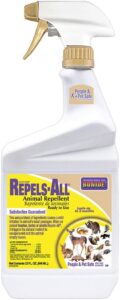
Editor’s Choice

Best Electronic
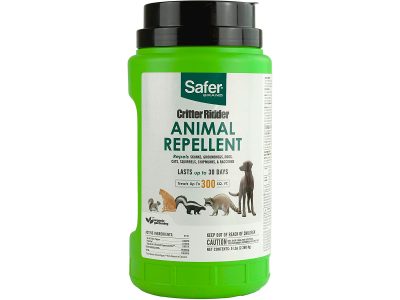
Best Granular
- Understanding Skunk Behavior and Prevention Strategies
- Types of Skunk Repellents: Choosing the Right Solution
- Top 8 Skunk Repellents for 2025
- Natural DIY Skunk Repellent Solutions
- Creating a Comprehensive Skunk Prevention Strategy
- Frequently Asked Questions
- When to Consider Professional Wildlife Control Services
- Seasonal Considerations for Skunk Control
- Humane Considerations in Skunk Management
- Understanding Skunk Behavior for Better Control
- Conclusion: Creating a Skunk-Free Property
- Recommended Resources
Understanding Skunk Behavior and Prevention Strategies
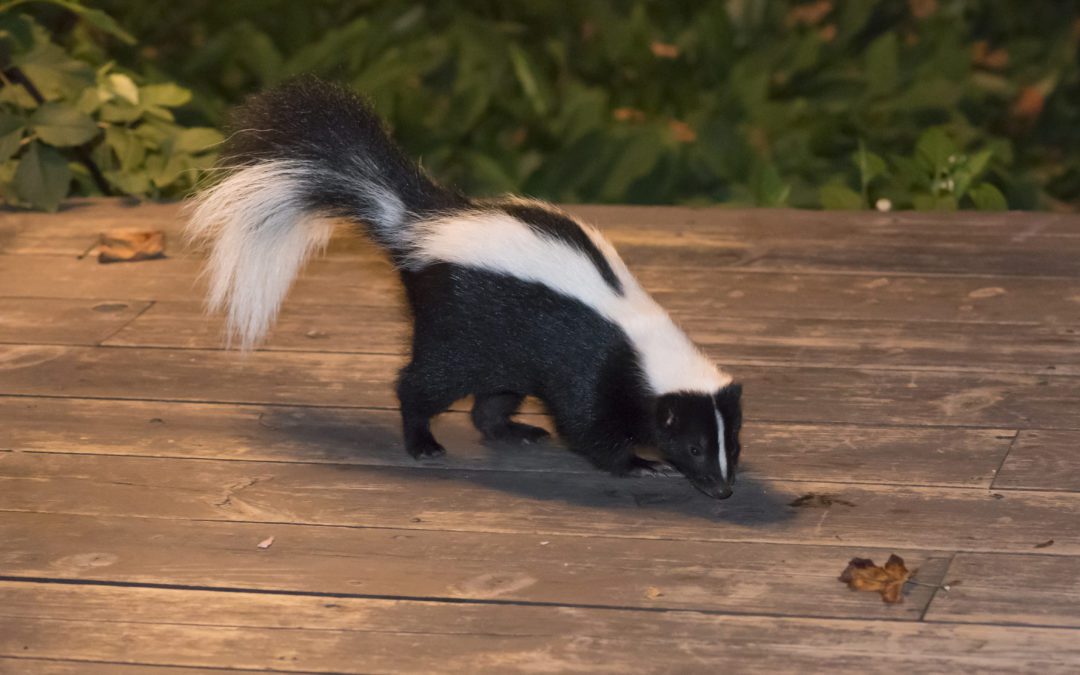
Before diving into specific repellent products, it’s important to understand why skunks might be visiting your property and what makes an effective deterrent strategy.
Food Sources: Skunks are opportunistic omnivores attracted to insects, grubs, fruits, berries, pet food, and garbage.
Shelter: They seek out protected spaces like decks, sheds, and crawl spaces to build dens, especially during breeding season.
Activity: Skunks are primarily nocturnal, doing most of their foraging at night when they feel safe from predators.
Defense: Their infamous spray can reach up to 15 feet and contains thiols—sulfur compounds that create the persistent odor.
The most effective skunk control strategy combines proper yard maintenance, elimination of food sources, and targeted repellent use. Simply applying repellents without addressing attractants will yield limited results.
Types of Skunk Repellents: Choosing the Right Solution
Skunk repellents generally fall into three main categories, each with different application methods and effectiveness levels. The best approach often combines multiple repellent types for maximum effectiveness.
| Repellent Type | How It Works | Best For | Limitations |
|---|---|---|---|
| Spray Repellents | Liquid formulations that irritate skunks’ sensitive sense of smell and taste | Gardens, perimeters, entry points to structures | Requires regular reapplication, especially after rain |
| Granular Repellents | Pellets or granules that release odors skunks find offensive | Large areas, lawns, garden beds | Can be scattered by wind or diluted by heavy rain |
| Electronic Repellents | Devices using lights, sound, or water to frighten skunks | Long-term solutions, chemical-free options | Higher initial cost, may require power source or batteries |
Top 8 Skunk Repellents for 2025
Natural Spray Repellents
Bonide Repels-All Natural Repellent Spray
Editor's ChoiceHow Does It Work
How to Use
- Shake well before using
- Spray liberally on plants, mulch, soil, and other surfaces where skunks frequent
- Focus application on entry points, perimeters, and known skunk pathways
- Reapply every 30-60 days or after heavy rainfall
- For best results, apply in dry conditions with temperatures above 40°F
- Long-lasting protection for up to 60 days per application
- Rain-resistant formula maintains effectiveness through various weather conditions
- Safe for use around children and pets when used as directed
- Biodegradable and environmentally responsible
- Ready-to-use formula requires no mixing
- Strong odor that some users may find unpleasant initially
- May require multiple applications for heavy skunk activity
- Not suitable for indoor use
Bonide Repels-All works on multiple sensory levels, which is why it’s consistently rated among the most effective repellents. For best results, apply it at dusk when skunks are beginning their active period but haven’t yet entered your yard.
Electronic Light Deterrents
PREDATORGUARD Solar Powered Predator Deterrent
Best ElectronicHow Does It Work
How to Use
- Mount the device facing the area you want to protect at a height of 2-3 feet
- Ensure the solar panel receives adequate sunlight during the day
- For large properties, install multiple units positioned toward common entry points
- Units can be mounted on trees, posts, fences, or buildings
- Allow 2-3 weeks for skunks to develop an avoidance pattern
- Completely solar-powered with no batteries or external power needed
- Weatherproof design withstands rain, snow, and extreme temperatures
- Range of up to half a mile makes it effective for large properties
- Silent operation won't disturb humans or domestic animals
- One-time installation with virtually no maintenance required
- May be less effective in areas with existing bright lights
- Requires good sun exposure to maintain charge
- Some extremely persistent skunks may become habituated over time
Nite Guard Solar Predator Control Light
Most DurableHow Does It Work
How to Use
- Place at eye level of the target animal (about 10-30 inches for skunks)
- Position facing the direction from which animals approach
- Install multiple units for perimeter protection (one per 30-40 feet)
- Mount on trees, posts, fences or structures using included hardware
- Ensure the solar panel receives 6-8 hours of sunlight daily
- Proven effective for up to 500 yards
- Weather-resistant construction survives harsh environments
- Maintenance-free operation with no batteries to replace
- Small, discreet size maintains your landscape's appearance
- Made in the USA with a 5-year warranty
- May require multiple units for complete coverage
- Takes time for animals to develop an avoidance pattern
- Red light may be visible from certain angles
Motion-Activated Sprinkler Repellents
Orbit Yard Enforcer Motion-Activated Sprinkler
Editor's ChoiceHow Does It Work
How to Use
- Connect the sprinkler to your garden hose in areas where crows frequently visit
- Adjust the sensitivity settings based on your specific needs
- Position multiple units for larger areas requiring protection
- Periodically relocate the sprinkler to prevent crows from adapting to its presence
- Humane method that doesn't harm birds
- Effective against multiple pest animals (deer, raccoons, etc.)
- Also waters your lawn or garden
- Motion sensor conserves water by only activating when needed
- Requires access to water and hose connection
- May not be practical during freezing temperatures
- Battery requires periodic replacement
Havahart Spray Away Hydro-Remote Repellent Sprinkler
Best SprinklerHow Does It Work
How to Use
- Position the unit facing the area you want to protect
- Connect to a standard garden hose with adequate water pressure
- Adjust the sensitivity settings based on the size of animals you want to detect
- Position away from areas with frequent human traffic to avoid unwanted triggering
- Move occasionally to prevent animals from learning to avoid specific spots
- Protects up to 1,900 square feet with a single unit
- Adjustable spray distance and detection sensitivity
- Works on multiple species including skunks, raccoons, and deer
- Uses only water, making it safe for all environments
- Remote control allows for manual operation when needed
- Requires water connection and adequate pressure to function
- May need to be drained and stored during freezing temperatures
- Higher cost than chemical repellents
Motion-activated sprinklers are particularly effective because they combine three deterrents in one: sudden motion, unexpected noise, and a spray of water. This multi-sensory approach creates a stronger negative association than single-sense repellents.
Granular Repellents
Safer Critter Ridder Animal Repellent
Best GranularHow Does It Work
How to Use
- Sprinkle granules evenly around the perimeter of areas needing protection
- Apply at a rate of about 1 lb per 300 square feet
- Focus application on entry points, garden borders, and under structures
- Reapply every 30 days or after heavy rainfall
- For indoor application (attics, basements), use sparingly in corners and entry points
- Effective for up to 30 days per application
- Safe for use around people, pets, and plants when used as directed
- Works in all weather conditions and temperatures
- Convenient shaker container allows for precise application
- OMRI listed for use in organic gardening
- May require more frequent reapplication in areas with heavy rainfall
- Not effective on animals already nesting on the property
- Slight odor may be noticeable to humans initially
Bonide Chemical Repels-All Granules
Longest LastingHow Does It Work
How to Use
- Apply granules at a rate of 1 lb per 500-600 square feet
- Distribute evenly around the perimeter of areas requiring protection
- For best results, apply after rainfall when the ground is moist
- Reapply every 6-8 weeks or after periods of heavy rain
- Avoid direct application to edible plants and vegetables
- Protection lasts up to 2 months per application
- Biodegradable formula is environmentally responsible
- Rain-activated formula releases repellent over time
- Wide-ranging effectiveness against multiple pest species
- Easy application with convenient shaker container
- Strong odor during initial application may be unpleasant
- Less effective in very dry conditions
- May require heavier application for severe infestations
Alternative Solutions
Ammonia as a Skunk Repellent
Budget OptionHow Does It Work
How to Use
- Soak rags or cotton balls in ammonia
- Place in sealed containers with small holes punched in the lids
- Position containers near skunk entry points and areas of activity
- Replace every 3-5 days as the ammonia evaporates
- For stronger effect, add a small amount of ammonia to trash cans
- Extremely budget-friendly solution
- Readily available in most households
- Quick to implement in emergency situations
- Can be used alongside other repellent methods
- No specialized equipment needed for application
- Short-lasting effect requires frequent reapplication
- Strong odor may be unpleasant for humans
- Less effective in outdoor areas with good ventilation
- Not suitable for use near plants or in enclosed spaces with people/pets
Natural DIY Skunk Repellent Solutions
If you prefer making your own repellents or need a quick solution before purchasing commercial products, these natural options can be effective temporary measures to deter skunks:

Citrus Peels
- Scatter fresh orange, lemon, or grapefruit peels around your property
- Replace every 3-4 days as the scent fades
- Focus on entry points and known skunk paths
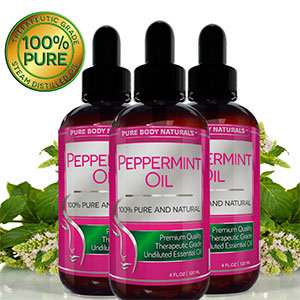
Peppermint Oil Solution
- Mix 20 drops of peppermint essential oil with 2 cups of water
- Add 1 tsp of dish soap to help the oil and water mix
- Spray around perimeters and entry points

Castor Oil Mixture
- Combine 1 cup castor oil with 1 cup liquid dish soap
- Mix 2 tablespoons of this solution with 1 gallon of water
- Apply to soil around gardens and foundations
While mothballs are sometimes recommended as skunk deterrents, they contain toxic chemicals (naphthalene or paradichlorobenzene) that can be harmful to people, pets, and the environment. Many states prohibit using mothballs as outdoor repellents. Safer alternatives are recommended instead.
Creating a Comprehensive Skunk Prevention Strategy
For maximum effectiveness, combine repellents with these essential prevention measures to make your property less attractive to skunks:
- Secure Food Sources Store pet food indoors, use animal-proof garbage containers, and remove fallen fruit from trees.
- Eliminate Shelter Options Block access to spaces under decks, sheds, and porches with hardware cloth or fencing buried at least 6 inches underground and extending outward at a 90-degree angle.
- Remove Grub Populations Treat your lawn for grubs, which are a favorite food source for skunks and often the primary reason they dig in yards.
- Install Proper Lighting Since skunks are nocturnal, motion-activated lights around your property can make them feel exposed and vulnerable.
For persistent skunk problems, consider a rotating strategy that uses different repellent types in sequence. This prevents skunks from becoming habituated to any single deterrent method.
Frequently Asked Questions
What smells do skunks hate the most?
Skunks have a highly developed sense of smell and are particularly averse to citrus scents, predator urine (fox, coyote, dog), ammonia, vinegar, and strong spicy odors like capsaicin (hot pepper). They also dislike the scents of peppermint, eucalyptus, and other strong essential oils that can irritate their sensitive nasal passages.
How long do skunk repellents typically last?
The effectiveness duration varies by product type. Spray repellents generally last 2-4 weeks before needing reapplication, while granular products may remain effective for 30-60 days. Electronic deterrents provide continuous protection as long as they remain operational (with adequate battery power or sunlight for solar models). All repellents typically require reapplication after heavy rainfall.
Are skunk repellents safe to use around pets and children?
Most commercial natural repellents are safe when used as directed, but precautions should still be taken. Keep children and pets away from freshly applied repellents until dry. For granular products, avoid direct application to areas where pets might ingest the granules. Electronic repellents are generally the safest option around children and pets as they use no chemicals.
Why are skunks digging holes in my yard?
Skunks typically dig small, cone-shaped holes in lawns while searching for grubs, insects, and larvae—their preferred food sources. This behavior is most common in spring and fall when grubs are near the soil surface. Treating your lawn for grubs with milky spore or beneficial nematodes can eliminate this food source and reduce digging activity.
Can I use skunk repellents if there are already skunks living under my deck or shed?
Repellents alone may not be effective for removing established skunk residents, especially during breeding season (February to March) when a mother skunk has kits. For existing infestations, use one-way exclusion doors that allow skunks to exit but not return, combined with repellents around the perimeter. Professional wildlife removal services may be needed for complex situations.
Do ultrasonic repellers really work on skunks?
Ultrasonic repellers show mixed results for skunk control. While some users report success, scientific evidence for their effectiveness is limited. These devices emit high-frequency sounds meant to be distressing to animals, but skunks may become habituated over time. For best results, combine ultrasonic devices with other repellent methods and frequently change their location to prevent habituation.
When to Consider Professional Wildlife Control Services
While DIY repellent methods are effective for minor or occasional skunk problems, there are situations when calling a professional wildlife control service is warranted:
If you notice multiple skunks, evidence of young kits (baby skunks), persistent digging despite repellent use, or skunks that appear sick or disoriented, it’s time to call a professional. Skunks can carry rabies and other diseases, making professional handling of severe infestations the safest approach.
Wildlife management professionals have the training and equipment to safely and humanely remove skunks from your property. They can also identify entry points and install exclusion devices that prevent future infestations.
What to Expect from Professional Services
- Property inspection to identify skunk entry points and activity patterns
- Safe trapping and relocation of skunks (where legally permitted)
- Installation of exclusion barriers to prevent re-entry
- Damage repair recommendations
- Preventative treatments and long-term control strategies
Seasonal Considerations for Skunk Control
Skunk activity and behavior change throughout the year, affecting which control methods will be most effective:
| Season | Skunk Behavior | Recommended Control Strategy |
|---|---|---|
| Spring (February-May) | Breeding season; females establish dens for raising young | Focus on prevention and exclusion before kits are born; use light and noise deterrents |
| Summer (June-August) | Increased foraging activity; young skunks begin to venture out | Combine repellent sprays, granules, and electronic devices; eliminate food sources |
| Fall (September-November) | Heavy feeding to prepare for winter; increased lawn digging for grubs | Treat lawns for grubs; apply long-lasting granular repellents; secure potential den sites |
| Winter (December-January) | Reduced activity; seeking winter shelter in protected areas | Seal entry points to structures; apply repellents around foundations and potential den sites |
Be particularly vigilant during late winter and early spring (February-March) when skunk breeding season begins. Female skunks actively seek secure denning locations during this time, and preventing them from establishing dens on your property is much easier than removing them after kits are born.
Humane Considerations in Skunk Management
Modern skunk control focuses on humane and environmentally responsible approaches. Lethal control methods are generally discouraged unless there are significant public health concerns, such as rabies.
The repellents and deterrents covered in this guide work by making your property less attractive to skunks without causing them harm. This encourages them to relocate naturally to more suitable habitats away from human dwellings.
Prevention: The most humane approach is preventing skunk problems before they start through habitat modification and exclusion techniques.
Natural Repellents: Plant-based and non-toxic repellents allow for effective control without environmental harm.
Electronic Deterrents: Light and sound devices create discomfort without physical harm, encouraging natural relocation.
Timing: Consider skunk breeding seasons when implementing control measures to avoid separating mothers from dependent young.
Understanding Skunk Behavior for Better Control
The more you understand about skunk behavior, the more effectively you can deter them from your property:
- Nocturnal Nature Skunks are primarily active from dusk to dawn, with peak activity typically occurring 2-3 hours after sunset. Motion-activated deterrents are most effective when set to operate during these hours.
- Defensive Behavior Skunks give clear warning signs before spraying, including stomping front feet, raising their tail, and performing a handstand. If you encounter a skunk displaying these behaviors, back away slowly and quietly.
- Limited Range Skunks typically stay within a 1-2 mile radius of their den and prefer not to relocate unless necessary. This is why consistent repellent use can eventually train local skunks to avoid your property permanently.
- Seasonal Activity Skunk activity levels change throughout the year, with spring (breeding season) and fall (preparing for winter) being the periods of highest activity around residential areas.
Conclusion: Creating a Skunk-Free Property
Keeping skunks away from your property requires a multi-faceted approach that combines understanding skunk behavior, eliminating attractants, and using effective repellent products. The best strategy typically involves: This includes securing garbage bins, removing fallen fruits, and ensuring pet food is not left outside. Additionally, educating yourself on how to eliminate skunk odor can be crucial, especially if a skunk has already visited your property. By employing these strategies, you can significantly reduce the chances of skunks making your home their own.
- Property assessment to identify skunk attractants and potential entry points
- Habitat modification to remove food sources and shelter opportunities
- Strategic application of appropriate repellents based on your specific situation
- Regular maintenance and monitoring to ensure continued protection
- Seasonal adjustments to your control strategy as skunk behavior changes throughout the year
By implementing the recommendations in this guide and selecting the right combination of repellent products for your situation, you can effectively deter skunks from your property while maintaining a safe, humane approach to wildlife management.
Remember that consistency is key when deterring skunks. Apply repellents regularly according to product instructions, maintain your property to eliminate attractants, and be patient—it may take 2-3 weeks to see significant results as skunks learn to associate your property with unpleasant experiences.
Recommended Resources
For additional information on skunk control and wildlife management, consult these authoritative resources:

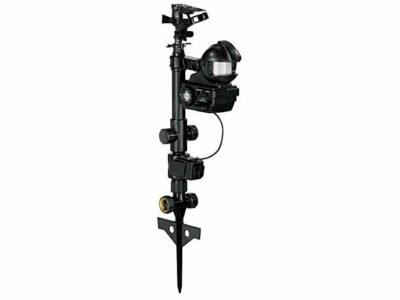
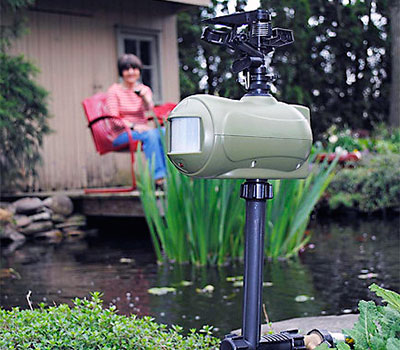

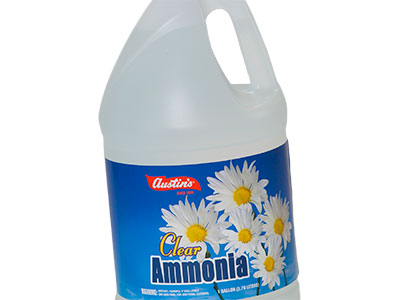
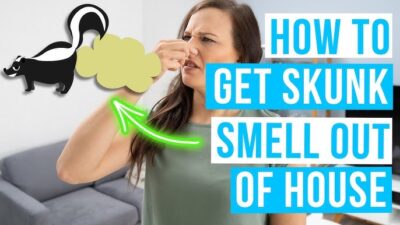


Put a light under your house. The skunk will leave, then after a day seal the crawl space up.
The best thing to do is live trap the skunks throw a towel over the trap throw ’em in a pick up and relocate them at least 5-10 miles away. When the cage is covered and they cannot see they will not spray. Also if the trap is small enough and they cant raise their tail they also cannot spray. Hope this works if I could get $ 20 bucks a skunk id trap and relocate them for you.
Are you anywhere near West Los Angeles? I NEED TO get rid of the skunk under my house and then seal the crawl space.
If you live in California, call a Federal Trapper. He will bring out a trap, show you how to set it up and how to bait the trap. I paid $20.00 for the first skunk trapped. The trapper came and took the animal. I paid him $10.00 for each additional animal I trapped. I trapped 26 raccoons and one skunk. That solved a lot of problems for me and my neighbors.
When is its best to live-trap skunks? I surely do not want to take a mother skunk away from babies. Someone said Fall is the best time, is that true?
I was just researching the same thing! I don’t want a skunk but not about to let babies die. Especially under my house .
I live in a trailer park in Erie, Pa and I’m getting sick of smelling skunks every night. It’s so bad it wakes me up in the middle of the night. What’s the BEST way to get them to quit coming into my yard??
I too like be in a manufacturers home community and have had skunks dig under the skirting track to get under my house. They spray and the odor come through the ventilation system and permeates throughout my house.
After tons of research, the only (humane) deterrents are dog pee, citrus peels, bright light and motion sensored automatic sprinklers. The only permanent solution appears to be installing a steel mesh barrier around the entire perimeter of your house at least 12″ deep sloping away from the house.
Good luck, as this will be a big and costly task.
I have a skunk in my yard. I need to get rid of it. I have small grandchildren and I’m afraid to allow them to go outside to the swings because I never know where the skunk is. I definitely don’t want to get sprayed by the skunk. I really need to some good advice on how to deal with the matter, that is not so costly. Help me!!!
Be Blessed
I can tell you how to get the smell off of you. I was sprayed terribly one night at almost point blank range. I tried everything…bathed myself in tomato juice, buttermilk and three showers, all to no avail. Then I came across a horse breeder (I live in Tennessee Walker country). I figured he would know and, boy, did he. He said to put cider vinegar on DRY skin and let it dry naturally. I was astounded! Took every bit of it away. Only a bit of it that was on me got in my home and that took awhile to go away, but I was cleared of the nasty smell. I considered myself lucky compared to my neighbor. The skunk sprayed into their air conditlioner system! It is funny to us, but surely wasn’t funny to them.
The predator eye won’t be very effective unless the skunk is close to the device. They have poor vision and can only see up to 3ft in front of them.
I feed feral cats at times, will any of these preventative measures to repel skunks be harmful to the cats? A couple that I feed are fairly young and do not wish to scare them off as mother left them. Please let me know. Thank you.
Should say havahart, and “to trap skunk cover trap”etc. sorry I was dictating and did not proofread I can spell
Put a live box trap out or have a heart trap, large, two trapped skunk cover trap with dark plastic, burlap, whatever so if you catch a skunk they can’t see you you pick the trap up and walk away with them and then shoot them which is illegal, Or call wildlife to remove! Works every time if they can’t see you they will not spray you pick the cage up throw it in the back of the truck bring it up the road do what you have to
Can anyone give me some advice on what to do about a skunk that has come to our home. I have been here 20 yrs and my husband has been here 39 yrs, we’ve seen them now and then on the side of the road but never at our home. Possums,deer,snakes,rabbits,groundhogs, moles, and once in a while a raccoon, yes. Never skunks! It has sprayed my neighbors’ dog and last night was in my yard under the light moving back and forward in a two foot line. I made a noise and it wasn’t affected. I have dogs in a lot and I’m concerned about them. I called animal control and was told, “They don’t deal with wild animals, call wildlife.” Called wildlife and was told, “We don’t trap on private property.” Now what do I do? I don’t know why it would be at my home, there’s no food outside and there are farms in a mile in two directions. I want the thing gone without putting myself, my family, or my dogs in danger! Any advice welcomed! Thanks.
I live in the city. We have a feral cats in our neighborhood. We also have skunk problem. Don’t know if it’s one or a family that lives under my neighbors shed. Drives my dog crazy. He can hear it move on our side of fence and even tries to dig under fence to get it. Yes, my dog has been sprayed already but still wants to chase it. We put our own traps out. To let you know we have caught cats, possums, groundhogs, raccoons and skunks. We do call Animal Control and YES they do come out and take them away. Maybe it’s different where you live. If wildlife says they don’t trap on private property then ask them if you trap it will they come pick it up.
Regarding the cats, it’s retty damn pathetic so many people (*point point) won’t call a rescue/TNR group instead of having the cat killed. At least trap/neuter/release programs gives the animal a second chance, and less vermin in the fields. You kill some ferals, others will take their place, but if you fix them, it does help the population stabilize, takes time, yes, but is proving more effective than having them murdered. Even if you don’t want to feed the feral, there are often other who will or maybe that was a tame stray put to death. Makes me sick ><
I live in OK and was able to get great help from dept of wildlife man licensed to remove nusence animals. He trapped 4 skunks and helped close up my crawl space.
Check in your area for someone like this. Oh he charged $25 each skunk trapped. Private company wanted $1500 to start.
ever heard of 12guage? i used a Remington and havr one very dead skunk
Mothballs also can be used to keep snakes away. They don’t smell like the snake repellent and last longer. Snake repellent has an extremely bad sulfur smell. Some people, like my husband are deathly allergic to sulfur. Especially good to put in and around dog lots and rabbit and chicken coops and under dog houses. Dogs won’t mess with them.
Dogs DO mess with mothballs some times. My 3 yr old golden retriever ate a few and died 6 weeks later despite vet attention as it destroyed his bone marrow and prevented any new blood cells from forming. PLEASE don’t use mothballs! This was an excruciating death to witness.
Hi – I am so sorry to hear of your loss. Just awful. I have 3 golden retrievers. One got nailed about 3 weeks ago – this morning at 6:30 am one of my others did – I was going to get mothballs but just read your post – do you know conclusively that it was the mothballs? Hopefully this will reach you, clearly I will not get the mothballs. Again, I am so sorry to hear about your dog.
Elaine Simmons
I urge people not to use poison, like for rats and such either. I’m very sure that’s why one of my wonderful cats died: the neighbor was probably poisoning the mice/rats and my cat ate one. I saw him catch it too. The only time his fat booty would move fast when he grabbed a mouse. He’d eat it fast and run. One of the few reasons I had the cat door at the time was because i had a terribly lousy air conditioner. That changed soon afterward but it didn’t bring back poor Heimy.L(
I was just about on my way out to get moth balls! sorry for your loss and thanks for your advice.
I’m sad to hear this, but glad you shared this. I will be sure if I use Mothballs , to keep it on my fenced property and not out side the fence , where I was thinking to.
I have used moth balls around my house because the skunks get in the crawl space and spray. After putting the mother balls out we caught on camera that the skunks still dig right beside and on top of them and still go under the house. Moth balls does not work around here.
And with the repellent that is make of 3 different peppers. I had a dog that keep digging and was told to put out cayenne pepper well that stupid dog ate cayenne pepper so maybe with these Cajun critters the pepper would not either. But I am going to try anything.
Mothballs are poisonous to dogs. Some idiot put them out and they blew into my niece’s yard and her dog ate some unaware to them until it was to late
A skunk is definitely not felines, either, but the male skunks around here are constantly getting after(& scoring, as I’ve witnessed to my horror several times…. it’s one of those types of train wrecks you just can’t help rubber-necking!), the local pussy cat population. And apparently, they prefer group encounters, too, & while the skunks act rough, the cats make absolutely horrid noises, sounding to the untrained ear as if they’re not at all willing parties; I’ve come to the confident conclusion that the state of matters is quite the opposite, though- the female felines are just simply THAT full of passionate, feline wild abandonment! This is evidenced by the fact that the groups usually consist of a greater number of fem-felines, than stud-skunks, & it also becomes clear to anyone who tries approaching the scene w/the bright idea of interrupting & rescuing the cats, as this will have both species directing piercing bath said baleful stares at you, powerful enough to literally haunt your nightmares & make you shiver on the spot! After several, Peppy LeP.U.-esque, inter-species group romance sightings, I’ve learned to recognize the raucous, amorous cacophony created whenever these two, honorably establishment-challenging species score a hook-up, & so I know better than to do anything but steer well clear whenever I do hear them, & avoid any imagination or memory based mental pictures that are linked to what I’m hearing… maybe think about baseball, or something?
That’s hysterical